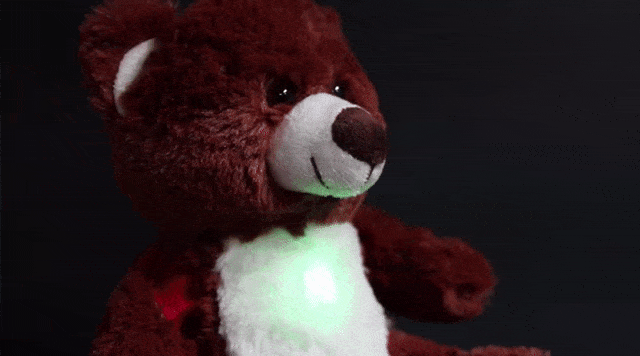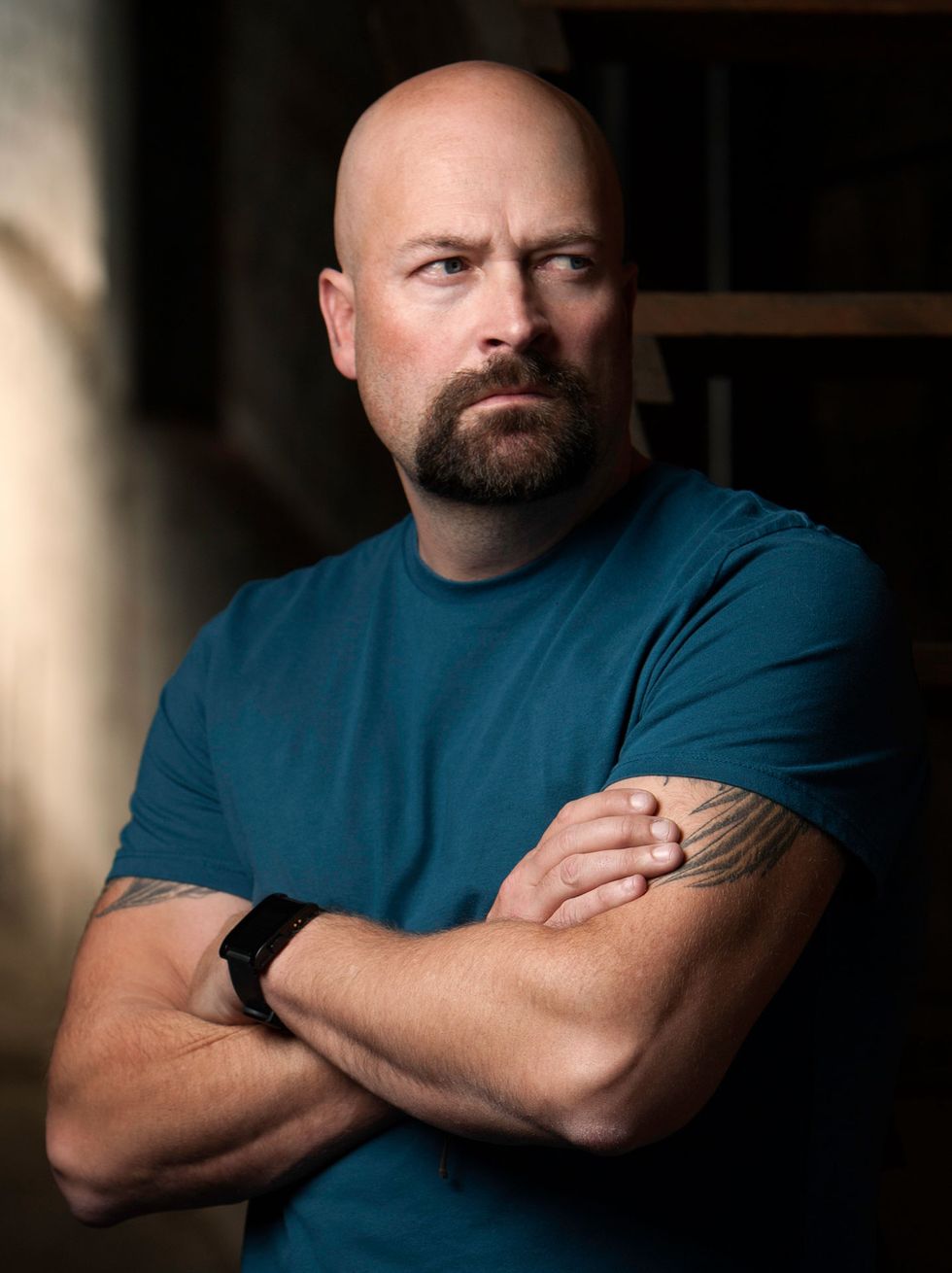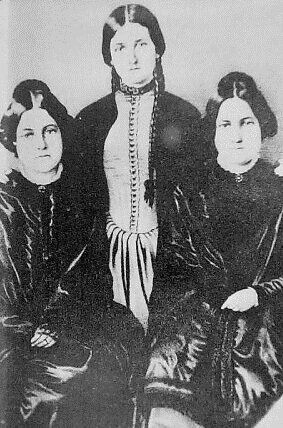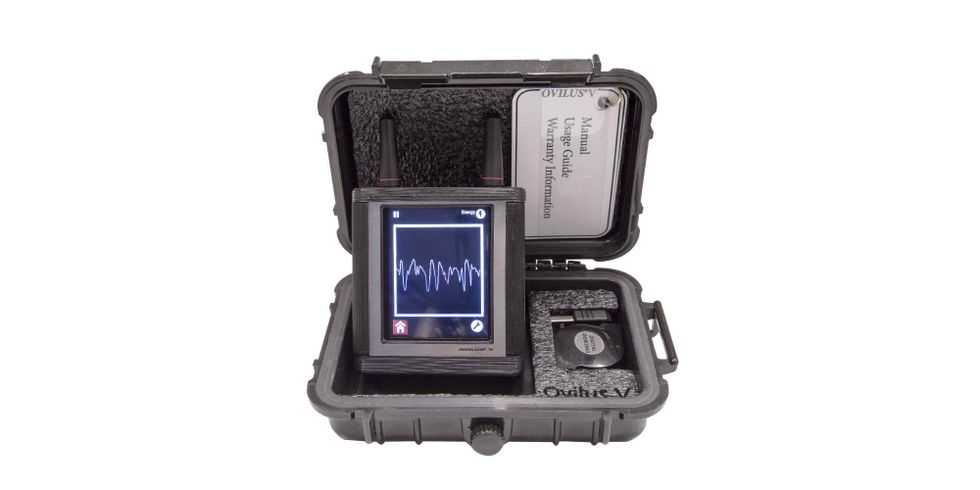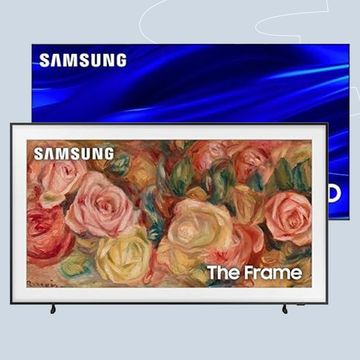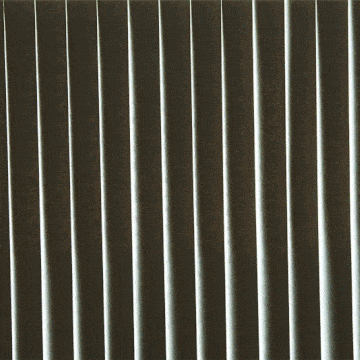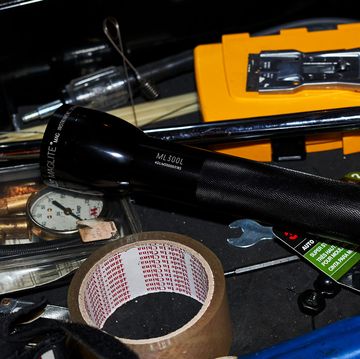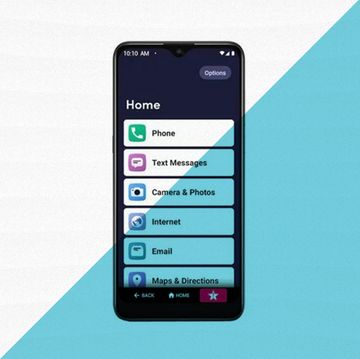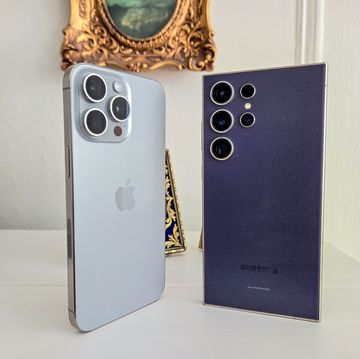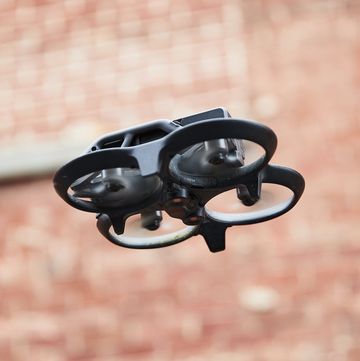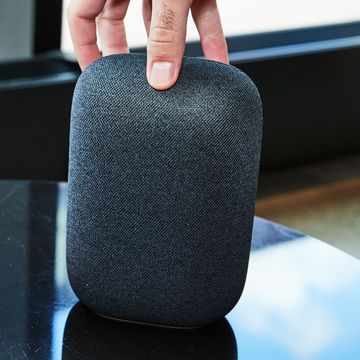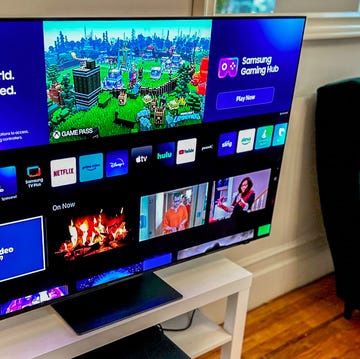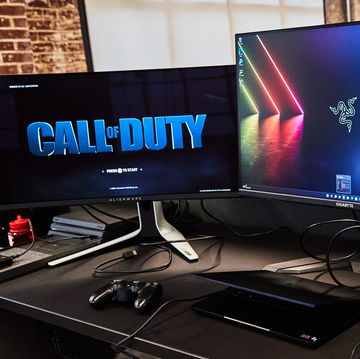One of the most sophisticated pieces of ghost-hunting equipment is a Teddy bear. Called the BooBuddy, this teddy isn't for snuggling. Instead, the little bear registers changes in temperature, electromagnetic fields (EMF), and motion. If something touches the stuffed animal, it laughs "That tickles!" If the temperature suddenly drops, it bemoans, "Brrrr, it's cold in here." As it sits idly in a room, it calls out, inviting spirits to engage: "What's your name?... Do you want to be my friend?"
Shawn Porter, one of the industry's most influential inventors, got the idea for the BooBuddy during a paranormal investigation. Despite reports of a lot of unusual activity, the readings went quiet when Porter arrived. He wondered if it was because of his presence. Then Porter had a vision: a robot investigator that could perform these tests without causing any disruption. He hid the surrogate in a cuddly toy that might lure out youthful spirits, and the BooBuddy was born.
The $160 interactive bear is a top seller at Porter's shop. Located in the quaint historic town of St. Cloud, Florida, just south of Orlando, GhostStop makes nearly all of its sales online. Even so, Porter likes talking with customers who walk in with their own ghost stories before walking out with a paranormal starter kit or EMF reader.
Porter and two hired engineers invent and manufacture the majority of the products in their workshop, a room crammed full of power tools, soldering irons, circuit boards, wires, and six MakerBot 3D printers. The store offers about 150 products, most of which are made in-house. Porter said he ships between 50 to 100 products daily to investigators all over the world. His fastest-growing markets are India, Australia, and the U.K.—countries where ghost hunting reality shows are finally taking hold.
That's not a coincidence.
Poltergeist Zeitgeist
The United States hit peak paranormal around the late 2000s, beginning in October 2004 with the debut of Ghost Hunters on the the SyFy channel. The first of what would be a flood of paranormal shows, Ghost Hunters follows the The Atlantic Paranormal Society (TAPS) founded by occult investigators and plumbers Jason Hawes and Grant Wilson. After a decade of success (and even a South Park gag at its expense), the show will conclude its 11th and final season on October 26 with hopes of seeing life on another channel.
TAPS examined unexplained phenomena for 14 years before Ghost Hunters made it to TV, and before ghost-hunting shops like GhostStop existed, the team had to rely on equipment they could find at RadioShack and home improvement stores. "We had some big VHS camcorders that practically took two people to hold," Hawes told Popular Mechanics. "We were using cassette recorders. We were modifying security equipment; modifying regular cameras to be able to shoot night vision."
Hawes said it was his dedication to documenting everything that made TAPS stand out from other investigation groups: "Anybody can say a place is haunted. Where is the proof to solidify those claims? People are hurting the field if they can't back up their evidence."
In his quest to back up evidence, Hawes reached out to Porter for technical consultation soon after the series began. With experience as a programmer, videographer, and photo editor, Porter could check whether images and footage had been doctored. In 2006, Porter started helping TAPS modify equipment for investigations. "With my technical background, they realized that we needed some equipment that was more suited for what we were doing at that time," Porter said, "There was no such thing as a store to get ghost-hunting equipment...you had to go to Home Depot and get a multimeter and hack it to do what you needed it to do."
That experience inspired Porter to build a website where he could sell his own creations in 2007. His first product was the Laser Grid, which detects disturbances that might not be visible to humans. Now he manufactures and sells EMF meters, bracelet audio recorders that pick up ghostly electronic voice phenomenon, 360-degree ghost cameras, and even a remote-control car that films spots people cannot reach.
But every ghost-hunting gizmo comes with GhostShop's terms and conditions that the company "does not guarantee or in any way claim that the products on this site or advice given will result in capture, documentation, or audience to any type of paranormal activity." Despite Porter's armory of meticulously constructed gadgets, there is no scientific evidence that it works—any of it. Although Porter and Hawes cite "energy" as the basis for modern paranormal theory, the history of this occult pseudoscience is largely propped up on deception.
A Phantom History
The connection between ghosts and energy goes back to the beginning of Spiritualism. The movement began in 1848 in Hydesville, New York, when two young sisters, Maggie and Kate Fox, began communicating with spirits through raps on furniture and walls. Word of the sisters' abilities spread, and soon they took the show on the road, inspiring more mediums to advertise their own skills. During the Civil War, there were so many psychics that anyone could find a clairvoyant to help them reconnect with their son who died in battle. Even Mary Todd Lincoln held a séance in the White House to speak with her deceased son Willie.
Although the Fox sisters revealed in 1888 that their act was fake, Spiritualism had already become a religion—one with miracles that could be witnessed and analyzed. Six years previously, for example, several scientists and philosophers formed the Society for Psychical Research (SPR), dedicated to studying cases of supposed spirit communication and hauntings using scientific methods.
During the same period, America was in the midst of a technological revolution—telephone, incandescent light, phonograph, photography. The United States issued 500,000 invention patents between 1860 and 1890. Many of these technologies were used in both the manufacturing and investigation of séances. Mediums might pipe in ghostly voices with the help of phonographs or claim that flitting lights were the interference of a spirit.
But the most important technology for Spiritualists was photography. "The ability to capture and record visible light seemed to hold out the possibility that the camera could capture more than that," said Leo Ruickbie, member of the SPR; editor of the organization's magazine, the Paranormal Review; and author of A Brief Guide to Ghost Hunting. "Soon after Spiritualism began, people were presenting 'spirit photographs' as evidence, although we know now that they were simply using double exposure to counterfeit the effect."
William H. Mumler was the first to take such a "spirit" photograph in the 1860s. But once Mumler's photo was declared a fake, he was criticized by P.T. Barnum (of all people) for taking advantage of people's grief. Yet even Thomas Edison caught the Spiritualism craze, stating in interviews and journals his desire to develop a spirit phone that would record the voices of the dead.
"All this new technology seemed very mysterious and magical to the general public," said Benjamin Radford, deputy editor of Skeptical Inquiry. "To many people it was plausible that someone could invent a telephone to the dead."
According to Radford, all these gadgets and all this talk about energy got mixed together and altered people's perception of ghosts. The SPR started using tools to try to quantify phenomena. Before the advent of psychical research, ghosts were Dickensian specters, shackled and moaning. By the 20th century, ghosts became energy, a blip on a machine.
Spiritualism died down in the 1920s, largely because so many mediums had been debunked and film was more entertaining than séances. By World War II, people inclined to believe in otherworldly entities focused their attention on UFOs. Most dedicated parapsychologists turned to lab work where they focused on statistical testing of precognition, clairvoyance, telepathy, and extrasensory perception—most notably at the Parapsychology Laboratory at Duke University.
While most of these scientists were studying the mysteries of the mind, there were some rogue ghost hunters, like Ed and Lorraine Warren (of The Amityville Horror and Conjuring fame) and SPR field agents, like Tony Cornell, a paranormal investigation tech pioneer who co-invented the Spontaneous Psychophysical Incident Data Electronic Recorder (SPIDER) in the 1980s. "He developed a sophisticated array of cameras that could be triggered by various sensors, the idea being that he could photograph whatever was causing the fluctuation," Ruickbie said.
Investigating the Investigators
Despite the fact that the SPIDER landed Cornell on the cover of Your Computer magazine, the device didn't have nearly the impact on ghost hunting tech as another, entirely different masterpiece of the '80s.
"The rebirth of the enthusiasm for using gadgets was Ghostbusters," said Sharon Hill, a geologist and science writer who reports on paranormal culture. "Even though those gadgets were kind of ridiculous and fictional, it made people believe that it could be possible and people projected that onto existing equipment." Ghostbusters was loosely based on the work of the SPR and parapsychology community. But Dan Aykroyd, Harold Ramis, and Ivan Reitman made the gear look cool.
The film inspired a whole new generation of paranormal investigation teams. But, according to Hill, it was the DIY nature of shows like Ghost Hunters two decades later that made paranormal investigating mainstream and inspired thousands of people to form their own teams. "It shows them that every man can take on a hero role," she says. "The plumber becomes the ghostbuster."
As a scientist, Hill says she's offended by the pseudoscience of ghost hunting. "They're suggesting to people that environmental anomalies translate to paranormal activity," she says. "You cannot make that jump. You're dealing with something that involves an in-depth knowledge of the environment, electromagnetic waves, radiation, how temperature can vary because of various things around the house."
One of ghost hunting's most vocal skeptics is Kenny Biddle, who through his YouTube series "I am Kenny Biddle" debunks what he sees as paranormal fraud by disassembling paranormal gadgets. "It usually takes about a month or two with each device to figure out what's going on," Biddle said. "Some of them, I found, usually take chips from Christmas lights that have a set of patterns and they use that chip to light the LEDs."
One of Biddle's most reviled gadgets is also one of the most popular among amateur ghost hunters—the Ovilus series. When the Ovilus is triggered by variations of electromagnetic fields, the mechanism spits out words from a pre-programmed dictionary. Like a demonic Speak & Spell, the phrases often sound like they were cherry picked from a John Carpenter flick. But it's not just the skeptics who are wary of the Ovilus—Hawes also thinks the methodology is flawed. "If I take a piece of equipment and I program all these demonic names and scary things and then I give it to you and you take it out to the field and it says 'Beelzebub, satan, death, murder,' where's the truth behind that piece of equipment?" Hawes says.
The developer of the Ovilus and founder of Digital Dowsing, Bill Chappell, also supplies most of the gadgets for the Travel Channel's popular paranormal reality show, Ghost Adventures. He is one of the most prolific developers in the paranormal field, and because of his close association with Ghost Adventures he is respected within the community.
Chappell declined an interview request. Zak Bagans, lead investigator of Ghost Adventures, originally agreed to an interview but changed his mind after communicating with Chappell. However, Chappell did explain his view on the paranormal in a blunt email saying "I do not believe in Ghosts or Spirits."
The inventor says he's built hundreds of devices and performed countless experiments over the last decade trying to understand the phenomena of EVPs and instrumental transcommunication. "The unmistakable conclusion," he wrote. "It is us, we are the ghosts."
But the TAPS team and their tech guru are still dedicated despite mountains of skepticism. "I think with the advancement of equipment we have been able to better prove the existence of the paranormal," Hawes said. "What we've done throughout the last two decades has helped to push the idea there are these things out there. But now, we're trying to figure out what they are."
Hawes is as busy as he's ever been. He is in talks with other networks about the future of Ghost Hunters. He's also working on ghost-hunting phone apps and collaborating with a thermoelectric engineer on a device that will record multiple frequencies and isolate ghostly voices—no matter how faint.
